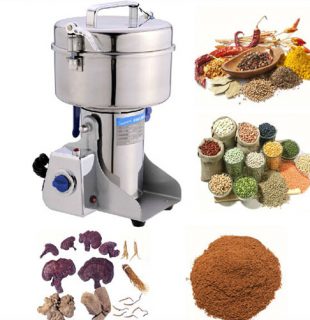Project Report For Spices Making Unit
Introduction
Project Report For Spices Making Unit is as follows.
The flavour and taste of processed foods are greatly improved by the use of spices. They have carminative, stimulant, and digestive characteristics, which are also employed in medicine. The majority of spices are exported from India, which also produces nearly all of them.
Although spices are primarily traded in their raw form, a small but considerable amount also enters the market as spice powders. The most popular of these blends or mixes is curry powder, which occasionally contains 20 or more spices and is made to influence the distinctive flavour of an Indian curry, which is loved by people all over the world.
We provide the spice processing facility for usage in business and industrial settings. It performs well and is quite effective. Cleaning, drying, grinding/pulverizing, sieving, packing, and sealing the packed spices are only a few of the sequential procedures involved in the processing and packaging of spices. Before processing, underground spices are first meticulously cleansed. The machine that is being offered is simple to use and has a long service life. The proposed machine for processing spices is very efficient and makes the procedure simpler and more practical. The machine is economical and requires no maintenance at all.

Manufacturing Process Of Spices Making Unit
- Procurement :- Spices with the finest flavour and scent are grown on Indian fields. At the farms (the production centres), when our teams of experts choose the greatest fresh harvest, the quality control procedure for us begins.
- Drying :- A crucial phase in the process of creating high-quality spices is drying. The precision attained during the drying of spices has a significant impact on the outcomes of the succeeding production phases. Flavor and aroma can be lost as a result of improper drying. To ensure optimal drying, we take extreme precautions. Under direct sunlight, the material dries.
- Cleaning :- The most desired attribute in any food product is purity. We use scientific techniques to get rid of any organic or inorganic contaminants. These procedures provide whole, 100% pure spices for further procedures.
- Grinding :- The colour and flavour of spices are determined by the proper grinding method. Due to the extreme heat generated during the traditional grinding process, the volatile oils that are most important for maintaining a spice’s flavour and taste are destroyed. Additionally, the natural colour of the spice has also faded away. We have a special multi-stage grinding procedure with a temperature control system. This method preserves the spices’ original flavour, taste, and colour.
- Quality Control :- At our production plant, a state-approved sophisticated laboratory maintains dual control over the quality of our spices. The tests support the physical inspections, and together they provide premium spices for our customers.
- Packaging :- Spices are packed using fully automated packing technologies in handy, moisture-proof packages. For consumer packs, we have cartons, polyester pouches, LDPE bags, PET bottles, and tins available. For bulk packs, we have Gunny bags, HDPE bags, Jute bags, and paper bags. Each package is made to have a longer shelf life while maintaining flavour, freshness, and scent.
Project Report Sample On
Spices Making Unit
Get Completely Custom Bankable Project Report
Market Potential Of Spices Making Unit
In 2022, the size of the Indian Spice market was INR 160,676 Crores. The market is expected to develop at a compound annual growth rate (CAGR) of 10.8% from 2023 to 2028, reaching INR 298,909 Crores.
The creation of new flavours, genuine cuisines, and ethnic tastes are the primary elements driving the growth of the Indian spice business. Spices are frequently used in homes to enhance the flavour and taste of food products. Furthermore, people choose healthy spices, such as turmeric, which boosts immunity. As a result, it is expected that rising household demand for spices will fuel market development for spices over the forecast period.
The market for spices is predicted to increase slowly over the coming years due to fierce competition and fluctuating pricing for the raw materials. Such elements are anticipated to put ongoing pressure on the manufacturer’s profit margin.
As a result, over the course of the forecast period, fierce market rivalry is anticipated to restrain the expansion of the Spices market. When ingested in big quantities, spices can lead to haemorrhoids and digestive issues including gastritis and others. Health experts also advise against them for the elderly and youngsters because spices might upset their digestive systems. Therefore, it is anticipated that these factors will restrain the expansion of the spice industry.

